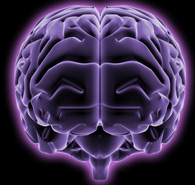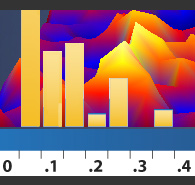Archive for the ‘Research’ Category
SPECT Scan Pre/Post – Neurofeedback & PTSD
Tuesday, January 20th, 2009A Remarkable Medicine Has Been Overlooked
Friday, December 26th, 2008 For a number of years I’ve had a fascinating book on my shelf. Every once in a while I pull it down and draw courage from it. I resolve to write a newsletter about it at some point, and then it goes back on the shelf. It is the autobiography of Jack Dreyfus, he of the Dreyfus Fund, Lion of Wall Street, who turned his interests to medicine in the later part of his career to promote greater utilization of Phenytoin (Dilantin, PHT) for a whole host of medical conditions.
For a number of years I’ve had a fascinating book on my shelf. Every once in a while I pull it down and draw courage from it. I resolve to write a newsletter about it at some point, and then it goes back on the shelf. It is the autobiography of Jack Dreyfus, he of the Dreyfus Fund, Lion of Wall Street, who turned his interests to medicine in the later part of his career to promote greater utilization of Phenytoin (Dilantin, PHT) for a whole host of medical conditions.
The frustrations he faced in his mission were in many ways parallel to what we have faced in neurofeedback. Perhaps it is still not too late for us to draw some lessons from his experience. Dreyfus suffered a first major depression at the age of 45 in 1958. Onset was quite sudden, as he awakened one morning in a state bordering on terror, overwhelmed with fear. The dominant symptom was a turned-on mind that was always riveted on negative thoughts related to anger and fear. But there were other symptoms as well, including daily headaches, frequent stomach irregularities, chronic neck pain, lack of energy, trembling of limbs, and cold hands and feet. The depression was major for a year, but continued for five years. Over a period of years he would see his doctor, a neuropsychiatrist, five or six times a week. That must have been more for companionship than relief, because relief was not on offer.
Dreyfus observed that his sudden mood swings would occur without any apparent provocation, either psychological or environmental. On one occasion, a young woman took his hand and massaged his fingers. Tension drained from him, which he sensed as electricity leaving his body. This triggered recollections of earlier encounters with electricity, such as when he received a shock from an electric wall socket as a child and experienced intense fear such as he was feeling now in his depression. On a couple of occasions he had an experience of sleep paralysis. He felt that he was awake but he could not move or open his eyes. His memory of the event was one of being frozen with electricity. (more…)
Infra-low Frequency Neurofeedback Training
Monday, November 24th, 2008
The following newsletter is now mainly of historical interest. Discussed here is the design of the first-generation Cygnet, which was intended for operation within the conventional EEG spectrum. There was no recognition yet of the need to cover the extremely low frequency region. The follow-on design, which became available in 2012, was optimized for operation across the entire band, including in particular the infra-low frequency region extending down to 0.1mHz. (Siegfried Othmer, 1/6/2015)
The recent newsletter on Infra-low Frequency Training raised a number of issues within our readership and within the larger neurofeedback community. The principal issues are addressed in the following.
First of all there is the issue of how we detect infra-low frequency activity with an amplifier that “cuts off” at 0.08 Hz. The Cygnet system incorporates a single stage of high-pass filtering into its design. We did so to provide more stable and more graceful operation of the system in its most common applications. Little did we know that down the line our most common applications would extend well into the frequency range that we were cutting off with our filter.
A single stage of filtering yields a gentle filter function, with an attenuation of a factor of ten for a factor of ten in frequency. This is best shown in a graph that uses logarithmic scales, particularly since we are now covering such a broad range in frequency. The amplifier transfer characteristic is shown in Figure 1. At a frequency of 0.008 Hz, for example, our system gain is a factor of ten down from the cutoff frequency of 0.08. Whether or not this presents a real problem is not a matter of the signal level, but rather of the signal-to-noise ratio. At low frequencies, we tend to refer to this as drift rather than noise, but there is no real distinction implied here. (more…)
Homecoming for Veterans
Monday, May 26th, 2008 Americans universally express appreciation for the service of our troops overseas. Yet so little is done to support the re-acclimation of our courageous soldiers upon their return home. This problem, which has been with us through many wars, will be exacerbated in the near future with the impending return of tens of thousands of veterans from Iraq — many of whom have served multiple tours of duty.
Americans universally express appreciation for the service of our troops overseas. Yet so little is done to support the re-acclimation of our courageous soldiers upon their return home. This problem, which has been with us through many wars, will be exacerbated in the near future with the impending return of tens of thousands of veterans from Iraq — many of whom have served multiple tours of duty.
Every soldier loses something in the battlefield. Certainly, the profound effects of PTSD, depression, and traumatic brain injury are only part of the story. Extended tours of duty under the most challenging conditions of urban warfare have made these and other problems worse. Medical advances are now allowing many soldiers to survive injuries that would not have been survivable in previous wars. But there is no comparable remedy for the mental health consequences suffered by the soldiers. These veterans need assistance they are not currently receiving as they come home to rebuild their lives, their families and their businesses. (more…)
Slow Cortical Potential Training
Wednesday, May 21st, 2008 The work with slow cortical potential training (SCP) is migrating from Tübingen to other universities in Europe where it is also being evaluated. It is therefore gaining quite a foothold, and we may even come to see an identification of neurofeedback with this particular approach among the academic community that is willing to study neurofeedback.
The work with slow cortical potential training (SCP) is migrating from Tübingen to other universities in Europe where it is also being evaluated. It is therefore gaining quite a foothold, and we may even come to see an identification of neurofeedback with this particular approach among the academic community that is willing to study neurofeedback.
On the positive side of the scale, we have a technique here that seems to be as diagnostically non-specific as frequency-based feedback. SCP training has been applied to the control of seizures and migraines as well as to conditions as varied as ADHD, depression, and schizophrenia. The technique is absolutely identical in all these applications. (more…)

The Return of a Romantic Age of Science
Thursday, August 6th, 2009(more…)
Posted in Commentary, Research, Scientific | 2 Comments »